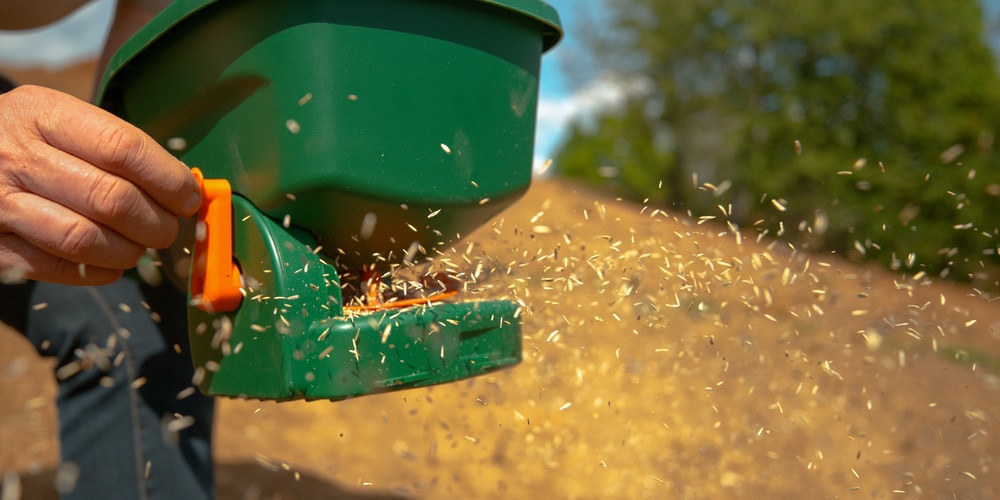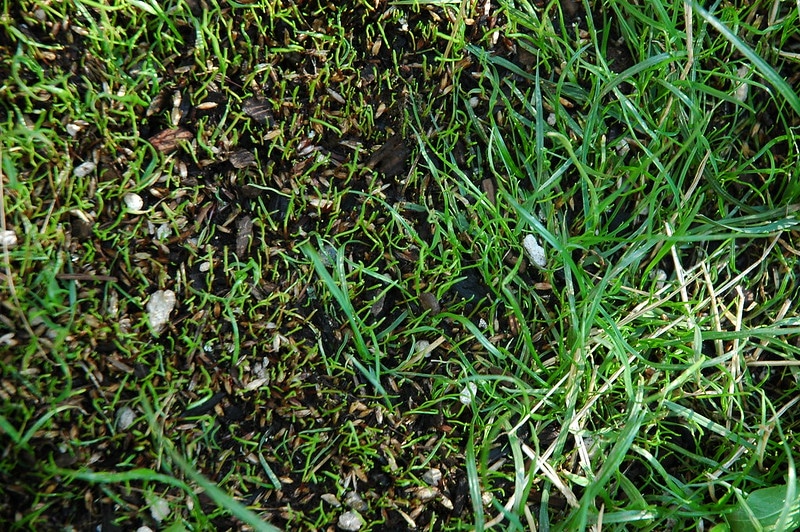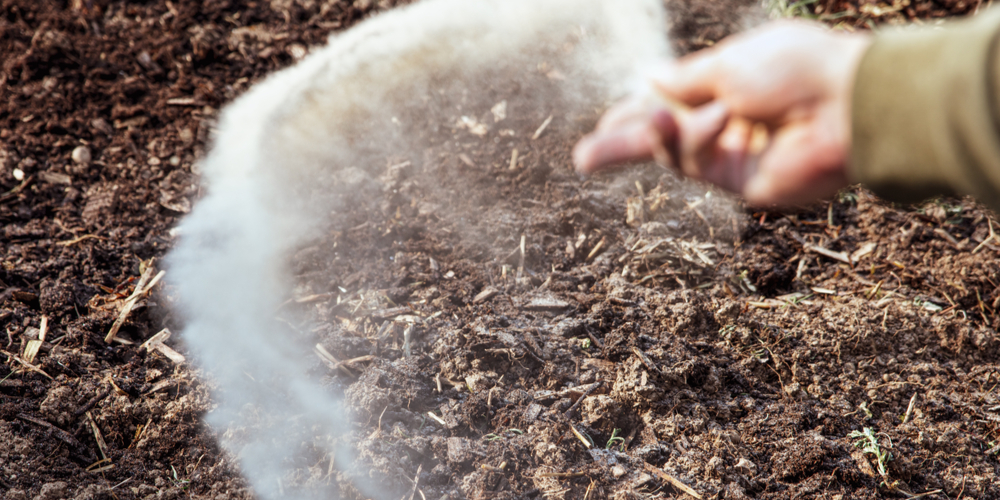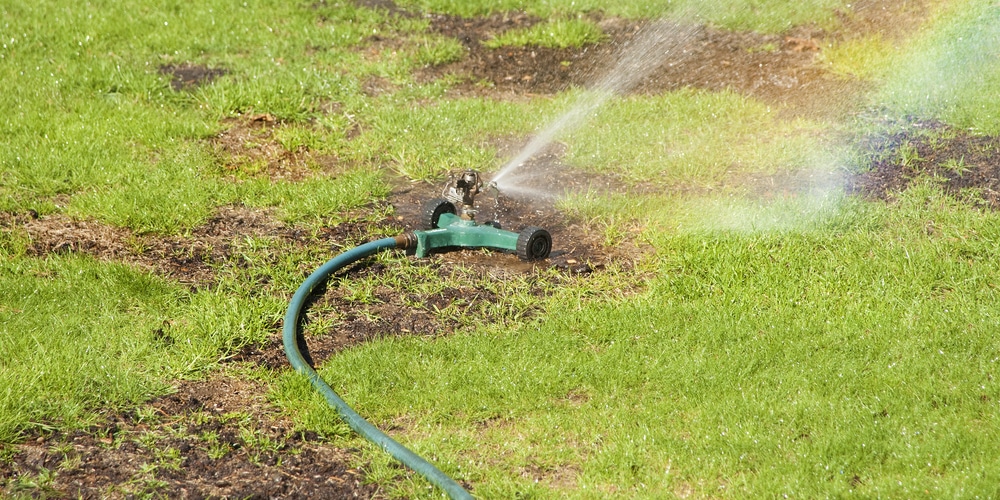| Question | When to Plant Grass Seed in Minnesota? |
|---|---|
| Answer | Early fall (late August to mid-September) and late spring (mid-May to early June). |
| More Info |
|
In Minnesota, the best time to plant grass seed is during early fall, specifically from late August to mid-September. This period allows the grass to establish itself before winter, taking advantage of the typically cooler temperatures, reduced weed competition, and natural fall moisture.
Fall planting encourages strong root development, providing a healthier and more resilient lawn in the spring.
A second planting window is in late spring, once the risk of frost has passed and soil temperatures have warmed to at least 50°F, usually from mid-May to early June. Spring planting can also be successful, especially with attentive watering and weed management, but it faces more challenges from summer heat and competition from annual weeds.
Minnesota’s Climate Zones
Minnesota’s diverse climate zones are a key factor in determining the optimal time for planting grass seed. These climate zones are defined by the United States Department of Agriculture (USDA) Hardiness map, which classifies regions based on their lowest average temperatures.
Northern Minnesota falls within zones 3a and 3b, where gardeners face shorter growing seasons due to colder temperatures. The middle of the state is categorized as zone 4a. Moving south, the climate becomes slightly milder, categorizing this region as zone 4b.
- Zone 3a: Minimum temperatures of -40°F to -35°F
- Zone 3b: Minimum temperatures of -35°F to -30°F
- Zone 4a: Minimum temperatures of -30°F to -25°F
- Zone 4b: Minimum temperatures of -25°F to -20°F
Each zone’s unique conditions mean that the timing for planting grass seed may vary within the state.
Gardeners must consider their specific zone’s characteristics when planning their seeding. The understanding of these zones is crucial for ensuring seed germination and achieving a lush, healthy lawn. It is recommended that individuals seek out cold-tolerant grass species that are well-suited to their local climate conditions.
Best Time to Plant Grass Seed in Minnesota
In Minnesota, the optimal times for planting grass seed hinge on avoiding the state’s harsh winter temperatures and ensuring adequate soil warmth for germination. Gardeners are presented with two primary windows: spring and fall.
Spring Planting
During spring in Minnesota, ideal grass seed sowing occurs between late April and early June.
A critical aspect is the soil temperature, which should be consistently between 55-65°F for the best germination results.
To maintain appropriate moisture for seed growth, regular watering is necessary to keep the soil moist without causing saturation.
Utilizing a slow-release nitrogen fertilizer during this period can help bolster a healthy beginning for the new grass.
Fall Planting
The prime timeframe for fall seeding is from late August to mid-September.
Cooler weather during this period diminishes the competition from weeds and the cooler temperatures are beneficial for seed germination.
The soil should be warm enough—ideally between 50 and 65 degrees Fahrenheit—but not too hot, which can stress the young grass.
Regular watering to maintain moist soil is also a must in the fall, but new seedlings will have the advantage of upcoming winter precipitation to assist with establishment.
Grass Seed Selection for Minnesota
When selecting grass seed for Minnesota lawns, understanding the regional climate is critical. Cool-season grasses are the best choice, as they thrive in the state’s cold winters and moderate summers.
Recommended Cool-Season Grasses:
- Kentucky Bluegrass: Resilient and aesthetically pleasing, it offers a lush, dense lawn with a vibrant blue-green hue.
- Fine Fescue: It’s shade-tolerant and requires less maintenance, making it suitable for low-traffic areas.
- Perennial Ryegrass: Known for quick germination, it provides a fine texture and is often mixed with other species for durability.
Suitability Factors:
- Soil Temperature: Ideal soil temperatures should range between 50 and 65 degrees Fahrenheit for seed germination.
- Sunlight Exposure: Most types require 4-6 hours of sunlight daily, with fine fescues thriving in shaded conditions.
When choosing grass seed, it’s beneficial to mix different species, as this helps in creating a robust and disease-resistant lawn.
| Grass Type | Sun Requirement | Maintenance Level |
|---|---|---|
| Kentucky Bluegrass | Full sun to partial shade | Moderate to High |
| Fine Fescue | Full shade to partial sun | Low |
| Perennial Ryegrass | Full sun to partial shade | Moderate |
It’s important for homeowners to consider their lawn space, desired maintenance level, and local environmental conditions before making a purchasing decision.
Soil Preparation and Seeding Techniques
Before seeding, the soil in Minnesota must be well-prepared to ensure the best conditions for grass seed germination and growth. The following steps outline crucial soil preparation and seeding techniques:
- Soil Testing: Begin with a soil test to determine pH levels and nutrient deficiencies. The ideal pH for lawn grasses ranges from 6.0 to 7.5. Adjust the soil accordingly based on the test results.
- Tilling: Tilling improves the soil structure, enabling better root development. Aim for a depth of 2-3 inches to create a loose bed for seeds.
- Adding Nutrients:
- Apply fertilizers based on soil test recommendations.
- Incorporate organic matter like compost to improve soil health.
- Leveling: After tilling, level the ground to avoid water pooling in low areas.
- Firming the Soil: Lightly roll the soil to firm it. A loose seedbed can prevent proper seed-soil contact which is crucial for germination.
When it comes to seeding:
- Timing: Seed in late summer (mid-August to mid-September) to capitalize on cooler temperatures and reduced weed competition.
- Seeding Rate: Apply grass seed at the recommended rate for the chosen variety. Over-seeding may lead to overcrowding, while under-seeding can result in patchy areas.
- Method: Distribute seed evenly using a spreader. For best coverage, spread half the seed in one direction and the rest in a perpendicular direction.
- Raking: Lightly rake the area to cover seeds with a thin layer of soil, ensuring that some seeds remain visible (about 10 to 15%).
Consistent watering is crucial post-seeding to maintain soil moisture for seed germination. However, avoid overwatering to prevent seed runoff or soil erosion.
Post-Planting Care and Maintenance
After planting grass seed in Minnesota, ensuring the seedlings have the ideal environment to grow is crucial. They require regular attention and specific conditions to establish a healthy and vibrant lawn.
Watering: Seedlings must stay moist to germinate effectively. Gardeners should lightly water new grass seed twice a day until the seedlings have grown tall enough to be mowed for the first time. Post the initial mowing, reduce watering to once a day, allowing roots to grow deeper into the soil.
Mowing: The first mowing should take place when the grass reaches about 3 inches in height. It is essential to use a sharp blade to prevent tearing the tender shoots. Always ensure that no more than 1/3 of the grass blade is trimmed during a single mowing session.
Fertilizing: A slow-release nitrogen fertilizer is beneficial after the grass is established. Generally, a follow-up fertilization should occur approximately 6-8 weeks after the seeds have germinated. It supports vigorous growth and helps in establishing a dense turf.
| Activity | Frequency | Details |
|---|---|---|
| Watering | Twice daily, then once | Keep moist until first mow, then allow for deeper root growth. |
| Mowing | When grass is 3″ tall | Only cut 1/3 of the grass blade to maintain health and encourage growth. |
| Fertilizing | 6-8 weeks post-germination | Apply a slow-release nitrogen fertilizer for robust growth. |
Weeding: Gardeners should apply pre-emergent herbicides carefully if needed, as they can affect grass seed germination. Once the lawn is established, manual weed removal is preferred to maintain the health of the young grass.
Frequently Asked Questions
When establishing a lush lawn in Minnesota, timing and selecting appropriate grass varieties are crucial. Below, readers will find pertinent questions and straightforward answers to navigate the specifics of grass seeding in this region.
What is the optimal time period for sowing grass seed in Minnesota during the spring season?
In Minnesota, the prime window for sowing grass seed spans from late April to early June when soil temperatures consistently remain between 55-65°F, key for optimal seed germination.
What are the best grass seed varieties suitable for the Minnesota climate and soil conditions?
Cool-season grass types, such as Kentucky bluegrass, fine fescue, and perennial ryegrass, are best suited for the climate and soil conditions prevalent in Minnesota.
When is the latest recommended time frame for seeding grass in Minnesota before winter sets in?
The ideal period for the last seeding in Minnesota is by mid-September to ensure the seedlings are established before the arrival of winter frosts.
During which months is it considered ideal to perform dormant seeding of grass in Minnesota?
Dormant seeding is often done in late fall, typically from November to mid-December, taking advantage of the freezing and thawing cycles to achieve good seed-to-soil contact.
Can you seed a lawn in Minnesota during the fall, and if so, what guidelines should be followed?
Yes, establishing a lawn in fall is an excellent choice. Aim to seed from mid-August to mid-September to allow grass to establish before winter, and ensure the soil stays moist for germination.
How does rainfall influence the timing of grass seeding in Minnesota?
Rainfall provides natural irrigation essential for seed germination, so planning seeding before rainy periods can be beneficial.
However, excessive rain can wash away seeds, so it’s a balance that needs to be considered.
Last update on 2025-06-06 / Affiliate links / Images from Amazon Product Advertising API






